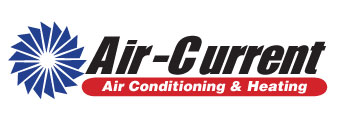It’s always nice when we manage to save money on our utility bills, but it just so happens there’s a way to do it when you aren’t even home.
It starts with your thermostat. By making the most out of your thermostat, you can structure its daily schedule around your personal preferences. This means establishing various temperature settings for when you’re home, away or even when you’re sleeping.
If you’re willing to make these adjustments, you’ll be able to enjoy comfortable temperatures while also keeping more of your money. Check out our guide on how your thermostat doesn’t have to use up all your summer spending money:
While at Home
Whenever you’re at home, you want comfortable temperatures. It’s only natural to want your thermostat lower in the summer while inside to appreciate the cool air.
But the most energy-efficient temperatures for the summer is in fact anywhere between 78 and 80 degrees Fahrenheit. By adjusting things a few degrees, you can stay cool while still keeping your energy bills low.
While Gone
If you’re setting the temperature for a vacation or other trip away from the house, the majority of homeowners will set the thermostat higher than you would if you were in the house.
Depending on the local climate or your home’s location, you can set the thermostat to higher temperatures like 88 degrees while no one is home before you adjust it back to the sweet spot of 78-80 degrees when you or a family member return. This way, your air conditioning unit won’t be working overtime to cool an empty house.
While Asleep
To enjoy a good night’s sleep during the summer, you want a nice cool temperature. A great place to start is between 68-72 degrees Fahrenheit. You won’t have to worry about getting too hot or too cold when you are trying to get some rest.
Other Strategies for Lowering Energy Use:
- Smart thermostat installation: Switching to a smart thermostat in the summer is an excellent way to reduce energy costs as it forms temperature schedules according to your lifestyle and idea of what comfortable is. It’ll take care of making changes while you are home or sleeping, before allowing it to get warmer when no one is around. With reliable brands like the Lennox iComfort, you are able to adjust settings and schedules through your smartphone, tablet or laptop. Planning smart thermostat installation in your Houston home can be the simplest strategy for maintaining comfortable, yet energy-efficient temperatures no matter where you are.
- Update your existing HVAC system: A high-efficiency HVAC system can save money in the long run. With greater energy efficiency, your utility bills will be lower because it requires less energy to reach your preferred temperatures. Air conditioning installation in Houston is a great way to beat the heat in the summer.
- Stay on top of routine AC maintenance: Whether or not you keep up with regular air conditioning maintenance in Houston can have a big impact on your monthly energy use. If you stay on top of cleaning key components like the coils, checking for damage and keeping vents clear of dust and debris, this can help your HVAC system perform better during day-to-day use.. Increasing efficiency also limits strain on important or delicate components and lowers operational costs, lowering total energy use and eventually the total monthly bill.
- Replace your air filter regularly: Cleaning or replacing the air filter regularly saves money by improving airflow. When filters are old and less effective, an AC unit has to work harder, and the added strain may impact the system’s life span and lead to breakdowns.
- Check if you have enough insulation in the attic: Insulation is one of the key components in any energy-efficient home, keeping the hot air outside and the cool air inside through summer. The North American Insulation Manufacturers Association (NAIMA) suggests that homeowners living in southern climates should have at least 13-14 inches of insulation, while colder climates do better with 16-18 inches.
- Review your air ducts: A leak in the air ducts could increase your energy bills much more than 20 percent, plus it can potentially allow harmful emissions from your water heater, clothes dryer and other appliances throughout your home. Watching for signs of leaks and sealing them can help with both these issues.
- Seal all other leaky spots in your home: Finding and sealing any remaining leaks in your home with caulk, foam sealant or weather-stripping helps keep things cooler during those hot summer days. Don’t forget to check for any gaps around windows, doors and even outdoor fixtures. Taking the time to seal up any leaks now can help you save a lot in the long term.
